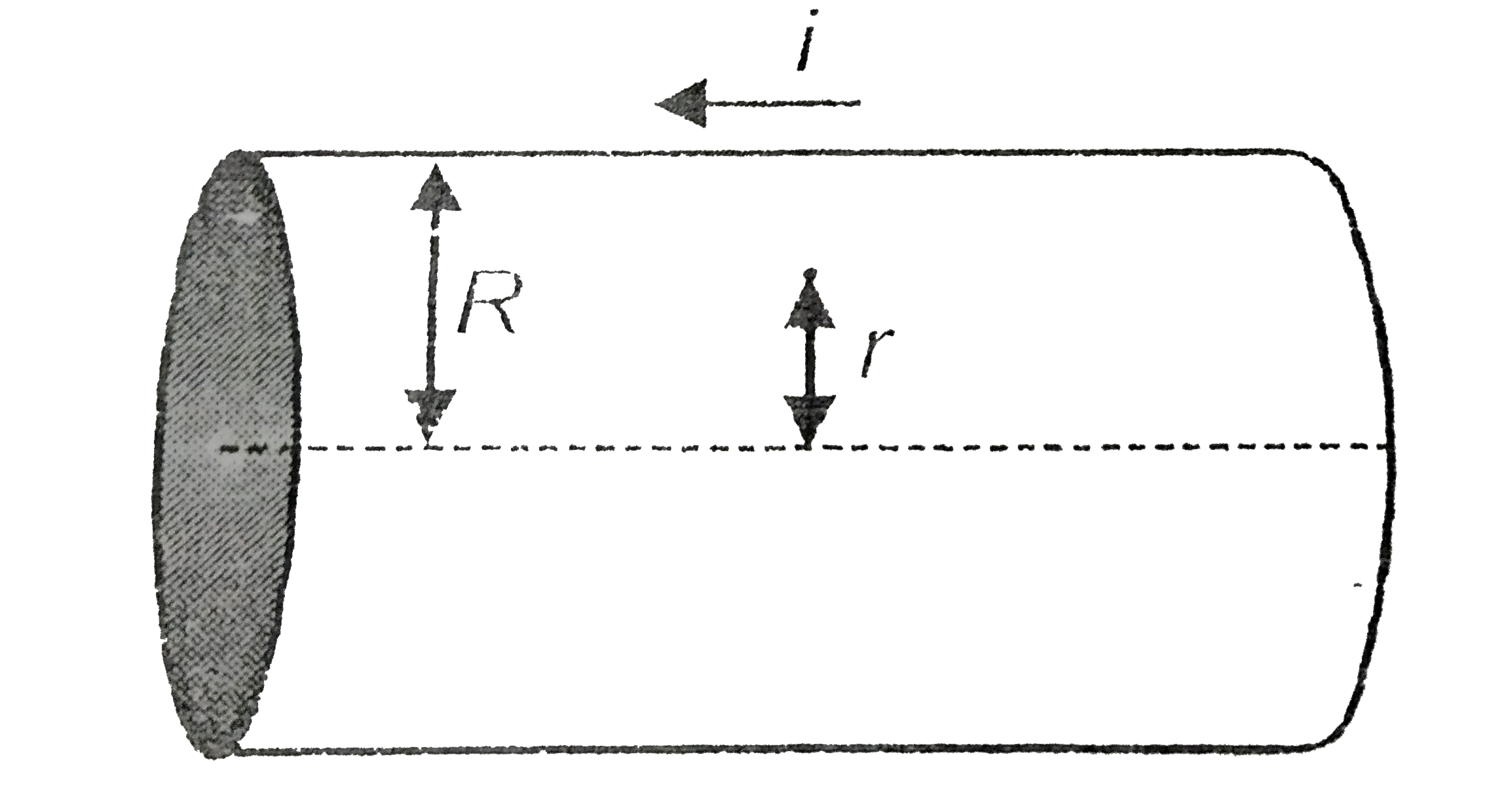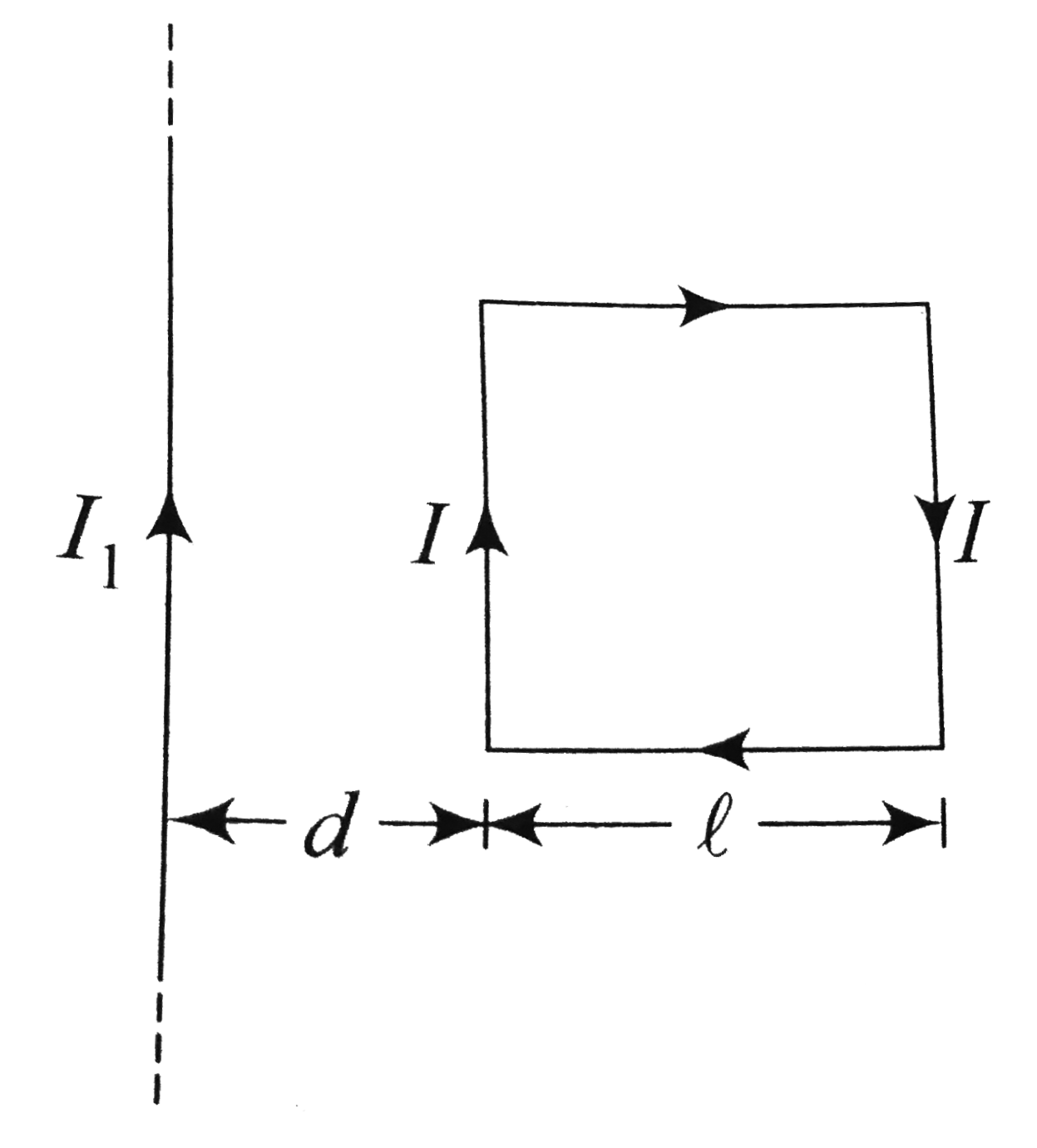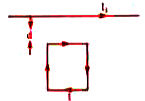A steady current I flows along an infinitely long hollow cylindrical conductor of radius R. This cylinder is placed coaxially inside an infinite solenoid of radius 2R. The solenoid has a n turns per unit length and carries a steady current I. Consider a point p at a distance r from the common axis . The correct statement(s) is (are)
In the region 0<r<R, the magnetic field is non-zero.
In the region R<r<2R, the magnetic field is along the common axis.
In the region R<r<2R, the magnetic field is tangential to the circle of radius r centered on the axis.
In the region r<2R, the magnetic field is non-zero.
The correct Answer is:A,D
To solve the problem, we need to analyze the magnetic fields produced by both the hollow cylindrical conductor and the infinite solenoid at various distances from the common axis.
1. Understanding the Setup:
- We have a hollow cylindrical conductor of radius R carrying a steady current I.
- This conductor is placed coaxially inside an infinite solenoid of radius 2R, which also carries a steady current I and has n turns per unit length.
2. Magnetic Field Inside the Hollow Cylinder:
- According to Ampere's Law, the magnetic field inside a hollow cylindrical conductor (for r<R) is zero because there is no current enclosed by the Amperian loop.
- Therefore, for 0<r<R, the magnetic field B=0.
3. Magnetic Field Outside the Hollow Cylinder but Inside the Solenoid:
- For R<r<2R, we need to consider the contributions from both the hollow cylinder and the solenoid.
- The magnetic field due to the hollow cylinder (for r>R) can be calculated using Ampere's Law:
Bcylinder=μ0I2πr
- The magnetic field inside the solenoid (for r<2R) is given by:
Bsolenoid=μ0nI
- Therefore, for R<r<2R, the total magnetic field is the vector sum of both contributions.
4. Magnetic Field Outside the Solenoid:
- For r>2R, the magnetic field due to the solenoid is zero (as the magnetic field outside an infinite solenoid is zero).
- However, the hollow cylindrical conductor still contributes a magnetic field:
Bcylinder=μ0I2πr
- Thus, for r>2R, the magnetic field is non-zero due to the hollow cylinder.
5. Evaluating the Statements:
- Statement A: "In the region 0<r<R, the magnetic field is non-zero."
- False (since B=0 in this region).
- Statement B: "In the region R<r<2R, the magnetic field is along the common axis."
- False (the magnetic field is not purely along the axis due to the contributions from both the solenoid and the hollow cylinder).
- Statement C: "In the region R<r<2R, the magnetic field is tangential to the circle of radius R centered on the axis."
- False (the magnetic field is not purely tangential).
- Statement D: "In the region r>2R, the magnetic field is non-zero."
- True (the magnetic field exists due to the hollow cylindrical conductor).
Final Conclusion:
- The correct statements are D only.
- We have a hollow cylindrical conductor of radius R carrying a steady current I.
- This conductor is placed coaxially inside an infinite solenoid of radius 2R, which also carries a steady current I and has n turns per unit length.
- According to Ampere's Law, the magnetic field inside a hollow cylindrical conductor (for r<R) is zero because there is no current enclosed by the Amperian loop.
- Therefore, for 0<r<R, the magnetic field B=0.
- For R<r<2R, we need to consider the contributions from both the hollow cylinder and the solenoid.
- The magnetic field due to the hollow cylinder (for r>R) can be calculated using Ampere's Law:
Bcylinder=μ0I2πr
- The magnetic field inside the solenoid (for r<2R) is given by:
Bsolenoid=μ0nI
- Therefore, for R<r<2R, the total magnetic field is the vector sum of both contributions.
- For r>2R, the magnetic field due to the solenoid is zero (as the magnetic field outside an infinite solenoid is zero).
- However, the hollow cylindrical conductor still contributes a magnetic field:
Bcylinder=μ0I2πr
- Thus, for r>2R, the magnetic field is non-zero due to the hollow cylinder.
- Statement A: "In the region 0<r<R, the magnetic field is non-zero."
- False (since B=0 in this region).
- Statement B: "In the region R<r<2R, the magnetic field is along the common axis."
- False (the magnetic field is not purely along the axis due to the contributions from both the solenoid and the hollow cylinder).
- Statement C: "In the region R<r<2R, the magnetic field is tangential to the circle of radius R centered on the axis."
- False (the magnetic field is not purely tangential).
- Statement D: "In the region r>2R, the magnetic field is non-zero."
- True (the magnetic field exists due to the hollow cylindrical conductor).
- The correct statements are D only.
Topper's Solved these Questions
- BOOK - RESONANCE ENGLISHCHAPTER - ELECTRODYNAMICSEXERCISE - Exercise-3 PART-227videos
ELECTRODYNAMICS
- BOOK - RESONANCE ENGLISHCHAPTER - ELECTRODYNAMICSEXERCISE - Exercise-3 PART-329videos
ELECTRODYNAMICS
- BOOK - RESONANCE ENGLISHCHAPTER - ELECTRODYNAMICSEXERCISE - Exercise-2 PART-3 COMPREHENSION- 35videos
ELECTRODYNAMICS
- BOOK - RESONANCE ENGLISHCHAPTER - ELECTRO MAGNETIC WAVESEXERCISE - Exercise 327videos
ELECTRO MAGNETIC WAVES
- BOOK - RESONANCE ENGLISHCHAPTER - ELECTROMAGNETIC INDUCTIONEXERCISE - A.l.P19videos
ELECTROMAGNETIC INDUCTION
Similar Questions
A conducting ring of radius b is placed coaxially in a long solenoid of radius a (b < a) having n turns per unit length. A current i=i0, cosωt flows through the solenoid. The induced emf in the ring is
View SolutionA long solenoid has a radius a and number of turns per unit length is n. If it carries a current i, then the magnetic field on its axis is directly proportional to
View Solution
Knowledge Check
- Question 1 - Select One
A short soleniod of radius a, number of turns per unit length n1, and length L is kept coaxially inside a very long solenoid of radius b, number of turns per unit length n2. What is the mutual inductance of the system?
Aμ0πb2n1n2LBμ0πa2n1n2L2Cμ0πa2n1n2LDμ0πb2n1n2L2
A current 'I' flows along an infinitely long straight conductor. If 'r' is the perpendicular distance of a point from the lower end of the conductor, then the magnetic induction B is given by
View SolutionA constant direct current of uniform density ˆj is flowing in an infinitely long cylindrical conductor.The conductor contains an infinitely long cylindrical cavity whose axis is parallel to that of the conductor and is a a distance →l from it.What will be the magnetic induction →B at a point inside the cavity at a distance →r from the centre of cavity?
View SolutionFind the magnetic intensity H at the centre of a long solenoid having n turns per unit length and carrying a current i (a) when no material is kept in it and (b) when a long copper rod is inserted in the solenoid.
View SolutionA circular coil of wire of radius 'r' has 'n' turns and carries a current 'I'. The magnetic induction (B) at a point on the axis of the coil at a distance √3r from its centre is
View SolutionA long cylindrical conductor of radius R carries a current i as shown in the figure. The current density J varies across the cross-section as J=kr2, where, k is a constant. Find an expression for the magnetic field B at a distance r(<R) from the axis
 View Solution
View SolutionA square loop, carrying a steady current I, is placed in a horizontal plane near a long staright conductor carryinf a steady current I, at a distance d from the conductor as shown in Fig. The loop wil experience
 View Solution
View SolutionA square loop, carrying a steady current I, is placed in a horizontal plane near a long straight conductor carrying a steady current I1 at a distance d from the donductor as shown in figure. The loop will experience
 View Solution
View Solution

